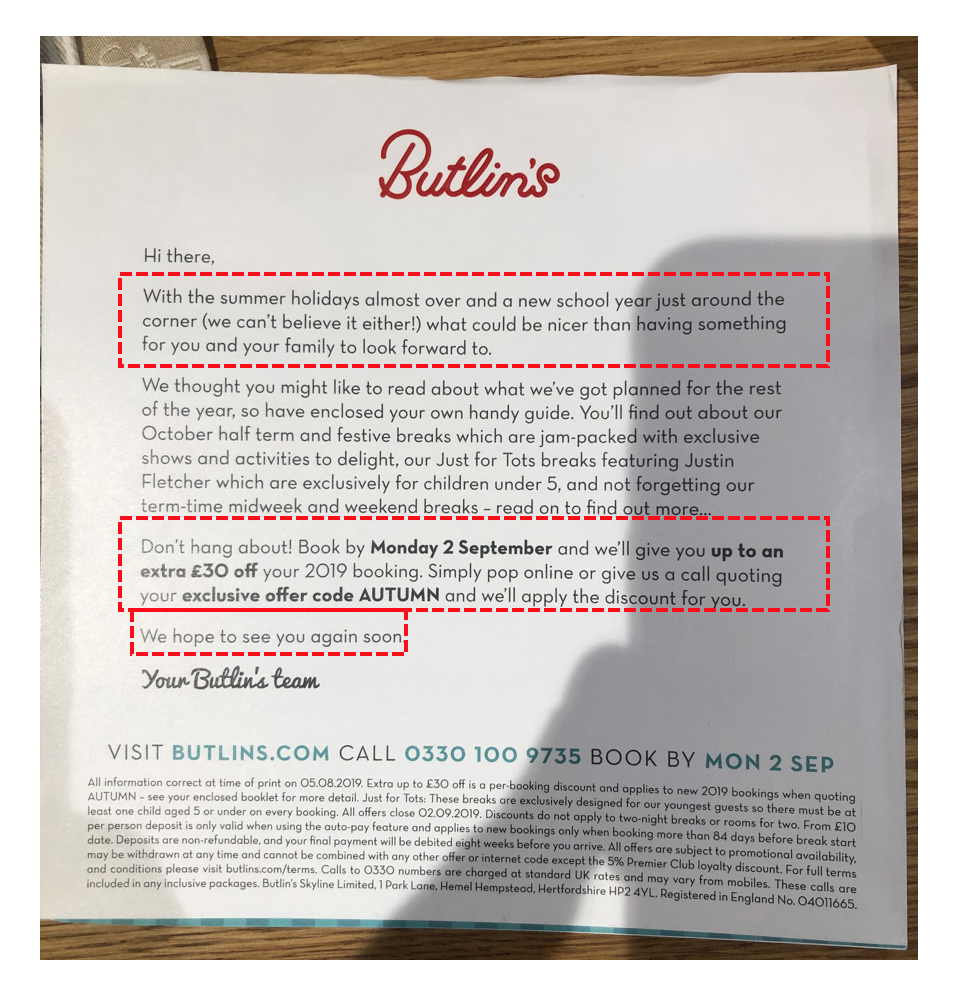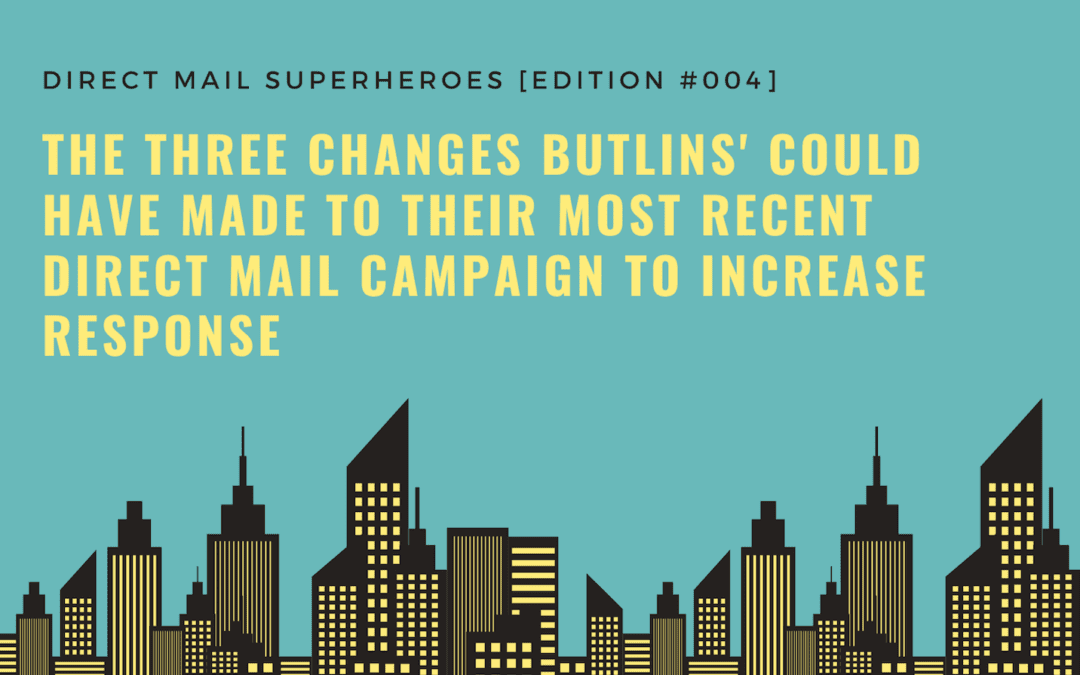So, aside from being the UK’s largest handwritten fulfilment house, a part of our business that don’t we often publicize is our consultancy.
We work with a number of brands and companies to help them increase the response of their campaigns, re-write their control (best-performing) letters and critique their existing mailings, to help them drive better results from their offline marketing.
In this edition of ‘Direct Mail Superheroes’ – I want to share a small direct mail piece that I received from Butlins’ earlier this year and share three changes that they could instantaneously make to increase their response.
Now, just to be transparent – we don’t work with Butlins’ and have never helped them or fulfilled any direct mail on their behalf. The piece that I’m sharing with you was mailed to my wife as we visited last year as an encouragement to book again for next year.
Here’s what we received:
(Please excuse the awful shadow and the tea-towel making an appearance in the top corner – this was casually taken at home at the time).

But let’s look at three things that they could change to increase the response of this mailer.
#1 – A Flat Intro (That Feels Generic, Loses Readers and Misses an Opportunity)
It almost feels like the copywriter sat staring at a blinking cursor and panicked at how to start this mailing, but they ended up going with an incredibly boring intro that feels flat and is referring to having your family look forward to something around the end of the year (hint; have they ever heard of Christmas?).
The worst part of this is a copywriting rule 101 is that the job of your first sentence should be to make your reader read the second sentence, etc.
But with this mailing, the first sentence takes all intrigue out of the copy – it’s flat, it doesn’t feel like it’s going anywhere and it will needlessly lose a percentage of readers.
However, the smarter approach with this would have been to speak directly to the reader and make the mailing feel somewhat personal to them, rather than a generic piece that the reader knows has also been received by tens of thousands of others.
For example, I would make the intro something like:
“It’s been a while since we last saw you, and in all honesty, the place doesn’t feel the same without you. But with the summer holidays coming to an end, have you thought about your next family adventure? Well, if you act fast, you can make a saving on your next booking. Let me explain …”
Can you see how much more engaging this is?
It speaks directly to the reader, it’s fun and it naturally leads you onto the next paragraph.
#2 – A Fluffy Offer That Raises More Questions than Answers
I don’t know about you, but this offer doesn’t make me want to take any action – it feels fluffy, it feels generic and I’m still unsure exactly what the offer is.
It says; “we’ll give you up to an extra £30 off” I have two problems with this.
The first is how fluffy it is – like, what does it mean? How much off is it exactly? Is that per person, per room or per booking? It needs to be so much sharper.
Secondly, the phrasing is all about them – they should never use the word “we” when positioning the offer – it needs to be focussed on the reader, not them.
I would change this to something like:
“You’ll get a £30.00 discount applied to your booking, ensuring that you benefit from the best priced Butlins adventure, guaranteed.”
This makes the offer focussed much more on the user, it’s clear to exactly what it is and it finishes with a benefit of accepting the offer.
A small thing I would also do is make the offer code something that looks personalised and exclusive – the word “AUTUMN” doesn’t scream exclusive.
#3 – The Assumption That The Reader Will Say No
This is a small change, but one that will change the sub-conscious messaging behind the final line of the copy.
It currently reads:
“We hope to see you again soon”
I don’t know about you, but that sounds like they’re not expecting to see the customer again. They “HOPE”.
This should be rephrased to lead with an assumption that the person will be returning and that they hope it’s this offer that leads them to their next visit.
Something as simple as: “We’re excited to see you …”
It’s a very simple change, but one that makes the buying decision feel natural and expected, rather than a “hope”.

